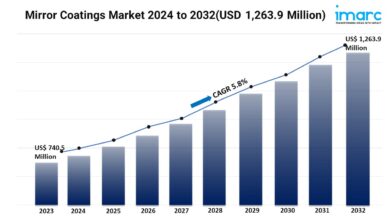Ionic vs Flutter: A Detailed Look for 2024
In the rapidly evolving world of mobile app development, choosing the right framework is crucial. Ionic and Flutter are two of the most popular frameworks available today, each with its unique strengths and weaknesses. This article will provide a comprehensive comparison of Ionic and Flutter in 2024, helping you make an informed decision for your next project.
What is Ionic?
Ionic is an open-source framework for building cross-platform mobile applications using web technologies like HTML, CSS, and JavaScript. Launched in 2013 by Max Lynch, Ben Sperry, and Adam Bradley of Drifty Co., Ionic quickly gained popularity due to its ease of use and flexibility.
Key Features of Ionic
- Web Technologies: Utilizes standard web technologies, making it accessible for web developers.
- Cross-Platform: Allows for the development of applications for both iOS and Android from a single codebase.
- UI Components: Offers a library of pre-built UI components that can be customized to fit the app’s design.
- Integration: Easily integrates with popular frameworks like Angular, React, and Vue.
What is Flutter?
Flutter is an open-source UI software development kit created by Google. Introduced in 2017, Flutter allows developers to create natively compiled applications for mobile, web, and desktop from a single codebase.
Key Features of Flutter
- Dart Language: Uses Dart, a programming language designed by Google, which is easy to learn and highly efficient.
- Single Codebase: Enables the development of applications for iOS, Android, web, and desktop from a single codebase.
- Rich UI: Provides a rich set of customizable widgets to build highly responsive UIs.
- Performance: Offers near-native performance due to its direct compilation to native code.
Development Experience
Learning Curve
Ionic:
- Familiarity with web technologies such as HTML, CSS, and JavaScript is sufficient.
- Easier for web developers to transition into mobile development.
Flutter:
- Requires learning Dart, which may have a steeper learning curve for developers not familiar with the language.
- Once familiar with Dart, developers can leverage Flutter’s robust features efficiently.
Development Speed
Ionic:
- Faster initial development due to the use of web technologies.
- A wide range of plugins and tools available to speed up development.
Flutter:
- Slightly slower initial development due to the need to learn Dart.
- Faster overall due to the rich set of pre-built widgets and tools provided by Flutter.
Performance
Speed and Efficiency
Ionic:
- Runs inside a WebView, which might lead to slower performance compared to native applications.
- Best suited for applications with less complex UIs and animations.
Flutter:
- Compiles to native ARM code, resulting in better performance and faster startup times.
- Highly efficient for applications with complex UIs and animations.
UI and UX
Ionic:
- Relies on web technologies, which may lead to inconsistencies in UI/UX across different devices.
- Customization of UI components might be limited.
Flutter:
- Provides a consistent and customizable UI across all platforms.
- Offers a rich set of widgets that ensure a high-quality user experience.
What are the Future Trends in Salesforce Data Synchronization?
Ecosystem and Community
Community Support
Ionic:
- Strong and active community with extensive documentation and resources.
- A wide range of plugins and integrations are available from the community.
Flutter:
- Rapidly growing community with comprehensive documentation and tutorials.
- Google’s backing ensures continuous updates and improvements.
Plugins and Integrations
Ionic:
- Extensive plugin ecosystem for integrating various functionalities into the app.
- Easy integration with popular frameworks like Angular, React, and Vue.
Flutter:
- Growing library of plugins available through the Flutter community.
- Seamless integration with Google’s services and other third-party libraries.
Cost and Resources
Development Cost
Ionic:
- Lower initial cost due to the use of web technologies.
- Easier to find developers with the necessary skills.
Flutter:
- Potentially higher initial cost due to the need to learn Dart.
- Long-term cost savings due to the single codebase for multiple platforms.
Resource Availability
Ionic:
- Abundant resources and tutorials available online.
- Easier to find experienced Ionic developers.
Flutter:
- Increasing number of resources and tutorials as the community grows.
- Google’s support ensures the availability of up-to-date resources.
Use Cases
Best Suited For
Ionic:
- Applications that require rapid development and deployment.
- Apps with less complex UIs and minimal performance constraints.
Flutter:
- Applications that demand high performance and rich UI/UX.
- Projects that require a single codebase for mobile, web, and desktop platforms.
Examples of Use
Ionic:
- Marketplaces and e-commerce apps.
- Content-driven applications like blogs and news apps.
Flutter:
- Fintech applications requiring high security and performance.
- Applications with heavy reliance on animations and complex UIs.
Future Prospects
Updates and Improvements
Ionic:
- Continuous updates with new features and improvements.
- Active community and developer support ensure the framework stays relevant.
Flutter:
- Strong future prospects with Google’s backing and continuous updates.
- Rapidly evolving with new features and improvements.
Industry Adoption
Ionic:
- Widely adopted in industries where rapid development is crucial.
- Popular among startups and small to medium-sized enterprises.
Flutter:
- Increasing adoption in various industries due to its performance and versatility.
- Preferred by companies requiring a consistent and high-quality user experience across multiple platforms.
Conclusion
Both Ionic and Flutter have their unique strengths and are suitable for different types of projects. Ionic is ideal for developers familiar with web technologies and projects requiring rapid development and deployment. Flutter, on the other hand, is perfect for applications demanding high performance, rich UI/UX, and a single codebase for multiple platforms.
When choosing between Ionic and Flutter in 2024, consider your project requirements, the skill set of your development team, and the long-term goals of your application. Both frameworks are robust and offer extensive features, so the right choice will ultimately depend on your specific needs and priorities.

